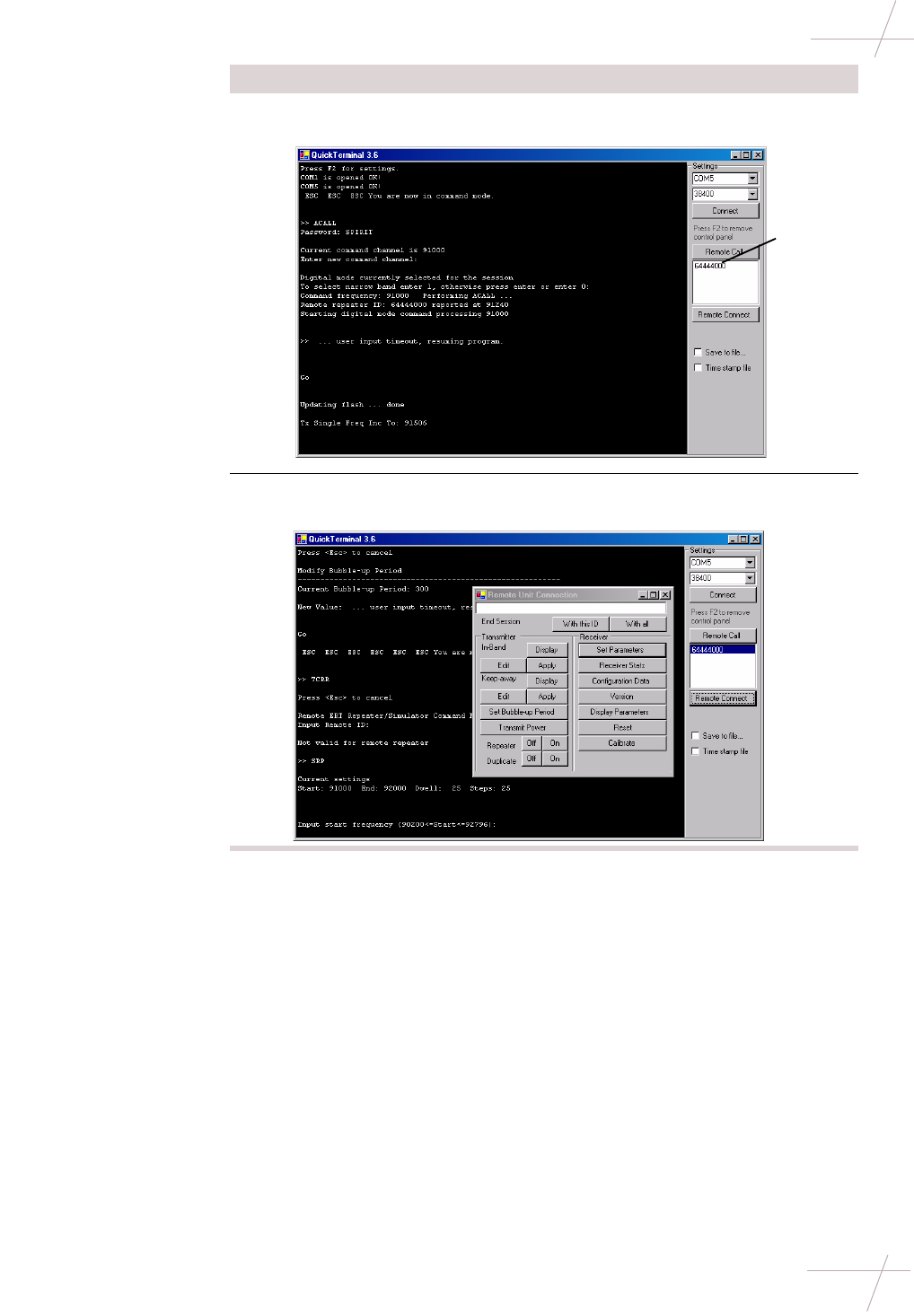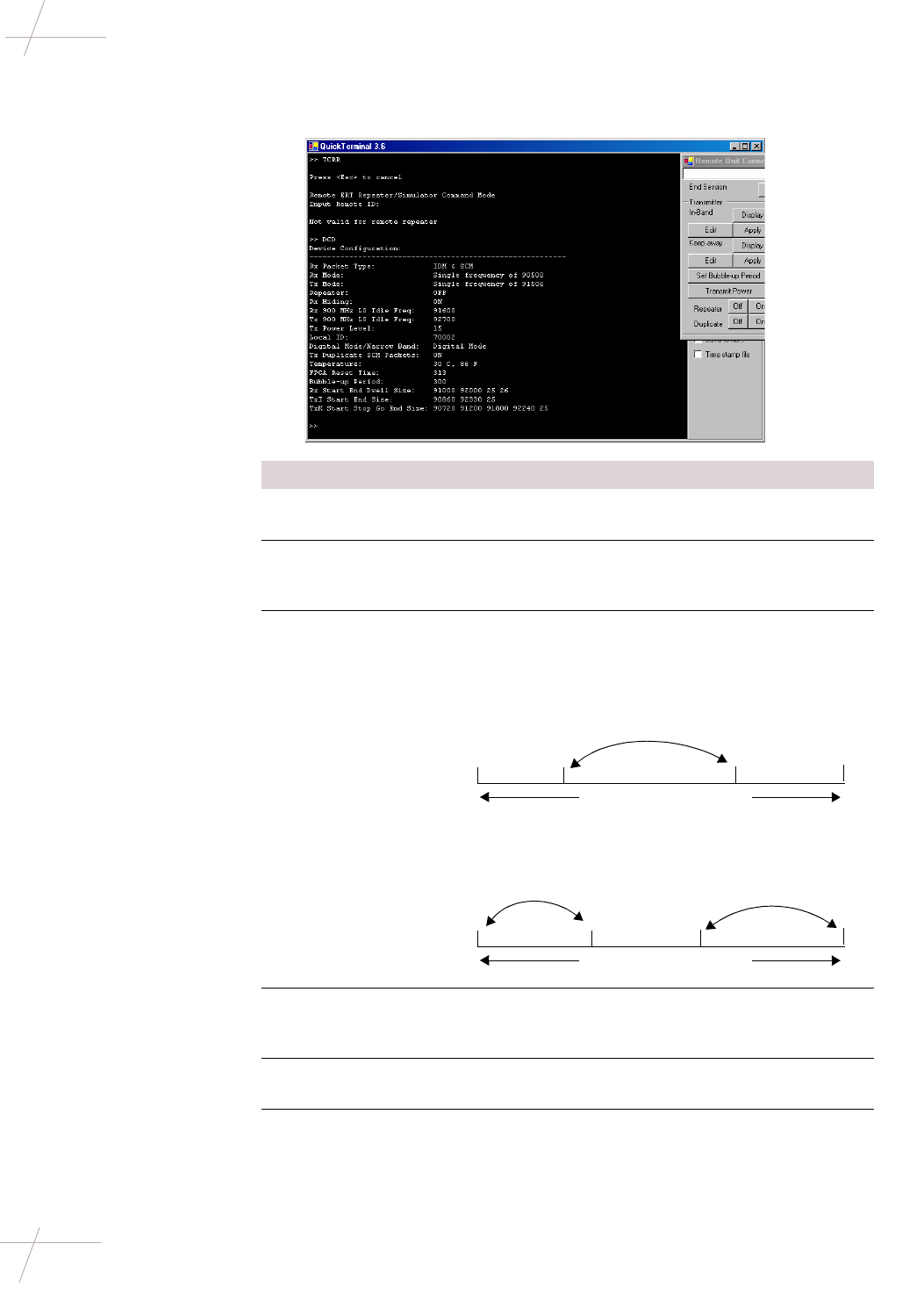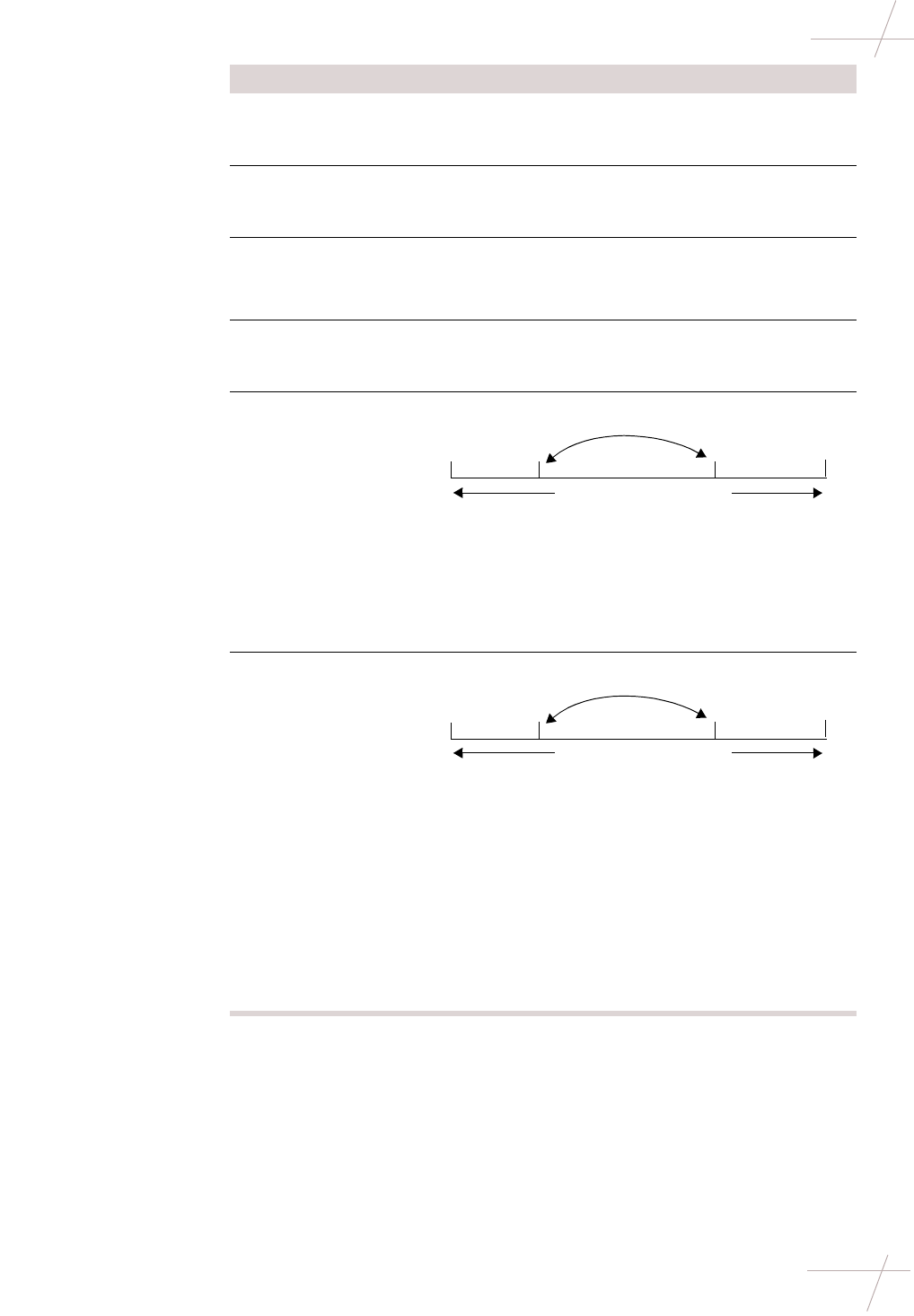Contents
- 1. Users Manual 1
- 2. Users Manual 2
- 3. Users Manual 3
- 4. Users Manual 4
Users Manual 3

DRAFT
Chapter 3 - Repeater Configuration 19
TDC-0613-000 10/04
Communicating with a Repeater
Ending a
Communication
Session
After a short amount of time, all of the repeaters that responded to an all call will
return to their programmed frequencies and continue to operate.
To return a repeater to its normal operation prior to the timeout, do this:
• From the Remote Unit Connection dialog, click With this ID.
To return all of the repeaters that responded to normal operation, do this:
• From the Remote Unit Connection dialog, click With All.
4Press Enter to accept Digital mode. The All Call starts and available
repeaters display in the Control Panel Remote Call list.
5Select a repeater from the list and click Remote Connect. The Repeater
Configuration dialog appears.
Step Action
Available
repeater

DRAFT
20 Fixed Network Repeater Installation Guide
TDC-0613-000 10/04
Communicating with a Repeater
Display Current
Configuration To display the current configuration of the repeater, do this.
• From the Repeater Display group, click Configuration Data. The configu-
ration of the selected remote unit displays.
Parameter Description
RX Packet Type Indicates the message type that the repeater is lis-
tening for: SCM, IDM or both.
RX Mode Mode in which the repeater is receiving messages.
Hop mode (random, sequence, or interleaved).
Default is interleaved
Tx Mode Transmit mode determines the range of frequencies
that the transmitter will use to communicate.
•In-Band Communication happens between
two specific frequencies. See TxI for more
information.
•Keep Away Communication happens any-
where but between the specified frequency
points. See TxK for more information.
Repeater Indicates whether the repeater is forwarding raw
messages. If set to off, the repeater is receiving ERT
data but not forwarding that data on to a collector.
Tx Power Level Amount of power that the repeater uses to forward
messages. Default is 20
Local ID The repeater identification number.
Radio Frequency Band
AB
In-band
Radio Frequency Band
AB
Keep
Away
Keep
Away

DRAFT
Chapter 3 - Repeater Configuration 21
TDC-0613-000 10/04
Communicating with a Repeater
Digital Mode/Narrow
Band Indicates the Band mode that repeater is connected
in. Digital mode is used for configuration. Narrow
band is used during general repeater operation.
FPGA Reset Time Prevents radio frequency from wandering over time
by resetting it periodically. Multiplied by 10, the
number of seconds between receiver resets.
Bubble-up Period The frequency of diagnostic message bubble-up.
Multiply by 10 to get number of milliseconds.
This parameter is used for Itron diagnostic purposes.
Rx Start End Dwell
Size Starting frequency, ending frequency, dwell length of
time, and size (see Display Receiver Parameters on
page 24 for more information).
TxI Start End Size Trasmit in-band settings.
•Start - Point A frequency
•End - Point B Frequency
•Size - The number of hops or steps between
point a and point b. The higher the number of
steps, the more granular the data.
TxK Start Stop Go
End Size Transmit keep away settings.
•Start - Indicates the start of the band
•Stop - The beginning of the keep away. Point A
in the example.
•Go - The amount of band to skip. Point B in the
example.
•End - End of the band
•Size - Number of hops or steps in the entire
band. The higher the number of steps, the more
granular the data.
Parameter Description
Radio Frequency Band
AB
In-band
Radio Frequency Band
AB
Keep-Away

DRAFT
22 Fixed Network Repeater Installation Guide
TDC-0613-000 10/04
Setting Communication Mode
Setting Communication Mode
Overview When communicating with the ERT endpoint, the repeater transmits and
receives using a 900 MHz radio. The repeater transmitter and receiver can each
be configured to operate on a single receive frequency or to periodically switch,
or hop, to a different frequency that is defined in a hop table.
For each entry in a hop table, the repeater will transmit or receive at the defined
frequency, dwell at the frequency for the specified time (in milliseconds), and
then hop to the next table entry frequency. Hopping can be either sequential or
random.
Using In-Band
Transmitter Mode In-band transmitter mode narrows the frequency band by specifying two points
in the band and limiting transmission to frequencies between those two points.
To display the current settings for in-band mode, do this:
•Click
Display. The settings display in the Data view.
To edit the In-Band settings, do this:
•Click Edit. Change the settings as desired.
To set repeater to use in-band mode, do this:
•Click
Apply. The repeater will use the in-band mode settings.
Using Keep-Away
Transmitter Mode Keep-Away transmitter mode narrows the frequency band by specifying two
points in the band and limiting transmission to frequencies outside those two
points.
To display the current settings for Keep-Away mode, do this:
•Click
Display. The settings display in the Data view.
To edit the keep-away settings, do this:
•Click
Edit. Change the settings as desired.
To set repeater to use keep-away mode, do this:
•Click
Apply. The repeater will use the in-band mode settings.
Set Bubble-Up
Period You may change the diagnostic bubble-up message frequency, if desired. To set
the bubble-up period, do this:
•Click
Set Bubble-up Period. Enter the new bubble-up rate.
Change Transmitter
Power Setting The radio transmission power setting may be altered according to the needs of
your deployment. For example, you may wish to reduce radio power for a
repeater that is close to a collector to minimize radio “noise.” To change the
transmitter power setting, do this:
•Click
Transmit Power. Enter a new transmission power.
Enable/Disable
Message
Forwarding
For diagnostic purposes, you may wish to prevent a repeater from forwarding,
or repeating, the messages it receives from an ERT endpoint. To enable or
disable message repeating, click Repeater Off or On.

DRAFT
Chapter 3 - Repeater Configuration 23
TDC-0613-000 10/04
Configuring Receiver Radio
Enable Duplicate
Filter By default, a repeater does not filter duplicate readings and repeats all readings.
To enable the duplicate filter, click Duplicate On. Only new readings will be for-
warded.
Configuring Receiver Radio
Set Receiver
Parameters The Set Receiver Parameters option displays the current receiver settings and
allows you to adjust those settings as needed. To set the receiver parameters, do
this:
• From the Receiver group, click Set Parameters. The current parameters
display in the data window. Enter the new parameters, as needed.
View Receiver
Statistics Use Receiver Statistics to view the current state of receiver settings.
Receiver Parameter Description
Start The starting frequency for the receiver.
End The ending frequency for the receiver.
Dwell The number of milliseconds the repeater receiver will
remain at this frequency. Multiply this value by 10
for the number of milliseconds.
Steps The total number of steps between Rx Start and Rx
End.
Receiver Parameter Description
Seconds since clear Indicates the number of seconds that have passed
since the last reboot. To avoid data corruption, the
repeater periodically reboots to its initial state.
RX Packet Type Indicates the type of packets that are repeated: SCM
or IDM message packets, or both types.
SCM Good/Bad RX Indicates the number of normal and corrupted SCM
message packets received since the last reboot.
IDM Good/Bad RX Indicates the number of normal and corrupted IDM
message packets received since the last reboot.
CMD Good/Bad RX Indicates the number of successful and unsuccessful
commands issued since the last reboot.

DRAFT
24 Fixed Network Repeater Installation Guide
TDC-0613-000 10/04
Configuring Receiver Radio
Display Current
Version To display the current version of the repeater firmware, do the following steps.
• From the Repeater group, click Version. The version of the selected remote
unit displays.
Display Receiver
Parameters The Display Receiver Parameters option displays the current receiver settings.
To view the receiver parameters, do this:
• From the Receiver group, click Display Parameters. The current parameters
display in the data window.
Reset Receiver If needed, you may manually reboot the repeater. The reset command reboots the
repeater and radio. To reset the receiver, do this:
•Click
Reset. The repeater will reboot.
Calibrate Receiver Calibration returns a repeater to its default configuration. To calibrate a repeater,
do this:
•Click
Calibrate. The repeater returns to original factory settings and
reboots.
Parameter Description
Application Version Firmware version of the repeater
Build Date and Time Save date and time of the firmware version
Repeater Type Type of repeater - pole-mount or sleeve-mount
Configuration Current configuration of the firmware
Receiver Parameter Description
Start Starting frequency for the receiver
End Ending frequency for the receiver
Dwell Number of milliseconds the repeater receiver will
remain at this frequency. Multiply this value by 10
for the number of milliseconds.
Steps Total number of steps between Rx Start and Rx End.